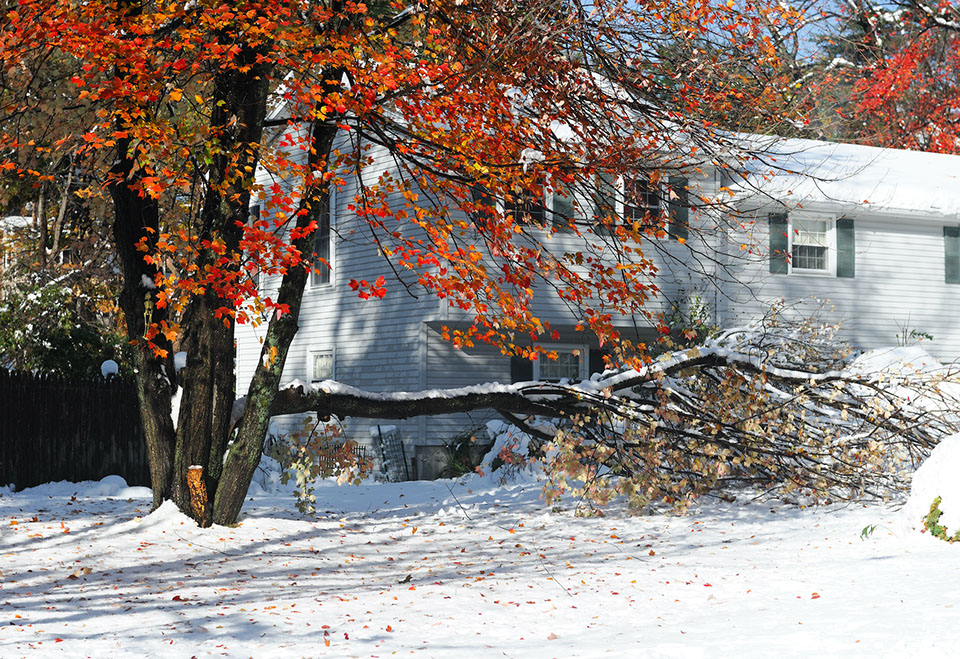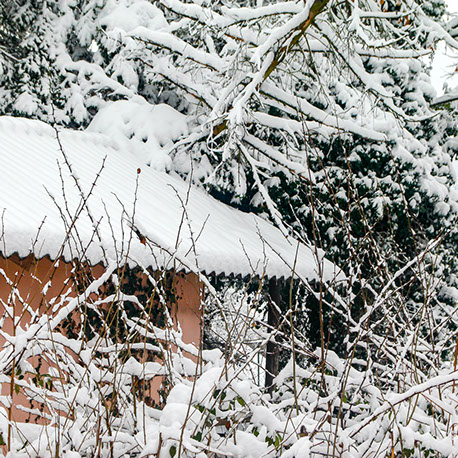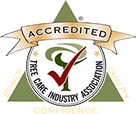The science of preserving nature since 1964

Winter Storms and Trees
Winter storms can be very destructive for trees. If you haven’t already, please have your trees and shrubs inspected by your arborist to avoid the chance of tree failure in extreme winter weather. Some ways to reduce winter damage include:
- Tree Removal: Your arborist may suggest removing a tree after conducting a tree risk assessment (please see the article in this issue). It may be better to remove a tree that has a high risk of failure than have it fail during a storm and become a danger to people and property.
- Pruning: Removing dead and weak branches is a good start to ensure that they will not come down in a storm, for any tree. Larger size trees can benefit via selective crown reduction through branch-end thinning which can reduce wind resistance and drag that can reduce the chances of branch failure or an entire tree uprooting. This is especially true of large species trees like oaks, maples, tulips, lindens, elms, sweetgums, etc.
- Cabling and Bracing: If your tree has some structural weakness, your arborist may suggest cabling and bracing as a way to preserve the tree rather than taking it down. These cables and bracing rods provide supplemental structural support and minimize movement in high winds. Identifying codominant stems with included bark and weak branch attachments is typically a part of our arborists inspection routine and protocol.
- Lightning Protection: Mature trees are particularly susceptible to lightning strikes — and even more so when located by large bodies of water. We install lightning rods that are inconspicuous and safe for the tree. If a tree is hit by lightning, the copper cables channel the current away from the tree (and any buildings and utilities) and into the ground where it can safely dissipate. The National Fire Protection Association recommends installation of tree lightning protection systems in large mature trees that are within 10 feet of a structure — and that they be installed by a qualified arborist in compliance with ANSI Z133-Part 4 standards.
If one or more of your trees fail, lose significant parts or are damaged in a storm, call your arborist right away so the damage can be inspected. Loss of a large tree or part can lead to future impacts on the site and neighboring trees. This can be true even when a neighbor's tree fails which could have impacts for your trees. It's good to be in the habit of walking your property after significant weather events to look up and inspect for broken branches or fresh cracks especially in mature trees. Contact your utility company at once if there are any broken lines on your property and avoid touching them.
If small trees, shrubs or evergreens are bowed down with snow, gently shake the trunk to dislodge the snow or use the bristle of a broom to clear it gently.


LOCATIONS:
Lower Westchester County, NY and New York City
58 Beechwood Ave, New Rochelle, NY 10801
914-576-0193
Upper Westchester (North of I-287)
15 Broadway, Hawthorne, NY 10532
914-741-1510
Fairfield County, Connecticut
547 Hope Street, Stamford CT 06907
203-348-4111
Bergen & Passaic Counties, NJ
504 High Mountain Road, North Haledon, NJ 07508
973-636-6711
Contact us for a Free Consultation
